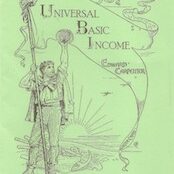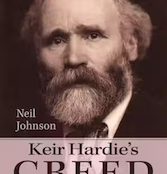The second part of BARRY WINTER’s report on a conference to explore Labour’s lost decades, held on Rotherham on 19 March.
Part 2: the 1930s
David Howell disagreed with Hobsbawm’s notion of Labour’s continued forward march during the 1930s; the pattern of support was more complex.
Electorally the ‘terms of trade’ were changing radically. The party’s performance in the north and Scotland was uneven and it lost its outposts south of Nottingham, except London (where there was support for the London County Council led by Herbert Morrison).
Labour’s share of the vote in the 1929 election, in which it came to office as a minority government, was reduced in 1935 when it lost to a coalition. In 1937, it gained Coventry, a growing industrial city. Yet, in nearby Birmingham, for every Labour councillor there were five Conservatives.
Labour’s support was not class-based but based on particular occupations and communities. Elsewhere Labour was seen as the outsider.
The 1931 general election saw a clearing out of a generation of Labour MPs born in the 1860s or earlier. The second generation, born in the 1880s, saw the party’s former leader, Ramsay MacDonald, as an anathema. With its own political style, the new generation shared a mistrust of intellectuals. Labour leaders Herbert Morrison, Hugh Dalton and Stafford Cripps were among those who were stigmatized in this way.
The 1930s was a period of political splits and divisions: the Communists emerged as a third party on the left; Oswald Mosley led a breakaway to the right; the ILP sheered off to the left. As a result, trade unions were seen as rescuers of the party, such as the transport workers led by Ernest Bevin.
At the outbreak of the Second World War, Labour was far from office. Had there been an election in 1939, the Conservatives under Chamberlain would have won.
What changed the situation were:
- the military failures which destroyed the credibility of the government
- Labour joining the wartime coalition and the growing legitimacy of planning and Keynesian economics which exorcised the demons of the 1931 economic crash
- the geographical mobilization involved in war in which a generation moved to the left favouring social reform
- the growth in trade unionism associated with the war effort and the revival of communities as a result of which Labour politicians were seen as natural leaders. In the armed forces, for example, there were long discussions about politics and political leadership, as illustrated by a letter from a young army officer which describe a debate on political leaders ranked Roosevelt first, Stalin second (supported by the fitters), and Churchill third.
Andrew Taylor looked at the other side of the equation, the nature and predominance of Conservatism as a political and ideological formation and how it responded to developments
It’s important to remember that although the decade was known as ‘the hungry ‘30s’ that experience was not universal. It was also a time of rapid development and a prosperous new economy. As well as industrial decline in south Wales and Tyneside, there was growth in towns like Luton and Coventry (based on the car industry). This helps to explain Conservative successes.
The Tories were anxious about the prospects of Labour’s forward march at the time, sufficiently so that they contemplated introducing proportional representation to stop Labour.
The core problem for Labour was how to go beyond its traditional areas of support. For the Conservatives, it was how to secure its heartlands and to expand to win seats in areas such as the depressed, industrial town of Stockton-on-Tees (which they did).
With the rise of Stanley Baldwin as party leader there was a less hostile attitude towards industrial disputes and trade unions. He took the critically strategic decision not to destroy Labour but to domesticate it. While he liked to be seen as the steady and reliable ‘Uncle Stan’ to the working classes, the other Baldwin was to use state power to defeat the 1926 miner’s strike.
After 1926, however, the Conservatives showed relative restraint towards the unions. Rather than any attempt to crush labour, Baldwin sought to build bridges with trade union leaders, including the General Secretary of the TUC, Walter Citrine.
The party also developed as a sophisticated, highly organised, political machine. It was good at propaganda, with Baldwin’s close, intimate ‘fireside chats’ on the radio. He was replaced as prime minister by Neville Chamberlain, an unimpressive speaker who had been a reforming minister of health.
What stands out about the Conservatives in the 1930s was their ability to adapt, to turn themselves into a popular and attractive party to the wider electorate. Labour did not display the same ability.
Hester Barron reviewed election results in the north as a case study for examining the claim for ‘the forward march of labour’ in the 1930s. She noted that in the 1931 general election Labour lost seats to the Tories and National Liberals, including mining seats in County Durham. Sedgefield, for example, where miners were 34 per cent of the male electorate, voted for a Conservative with mining links. Consett, where 55 per cent of male voters worked in mining, was won by a National Liberal. In Jarrow, the Conservative candidate overturned a 9,000 Labour majority.
Most of the recently enfranchised miners’ wives voted Conservative or National Liberals. In Stockton, Harold Macmillan regained the seat he lost in1929 with an appeal to women voters. This was at a time when 19 pits had been closed in the first half of 1931 because of the recession.
There was no such thing as a safe Labour seat in the 1930s. The working class was not Labour’s natural constituency: their vote had to be earned. It was a very volatile period and the 1931 election itself was conducted in an atmosphere of anti-Labour hysteria. Later she added that it is important to remember how new the Labour Party was as in the ’20s and ’30s. It had not had time to work through the ideological issues.
Discussion on the 1930s
David Howell agreed that the 1930s was very volatile. The political career and changing allegiances of Oswald Moseley demonstrates this. Constituencies changed hands between the three parties. Political identities were being remade. There was economic orthodoxy in each party; there were iconoclasts in each party. The ideological spectrum on economic issues was spread across the parties, including support for Keynes.
Labour voting by men was determined by their workplace experience. Women’s political formation was more domestic and more privatized, giving the Tories the advantage here.
Andrew Taylor said that the Conservatives first used an advertising agency in 1929. It ran a sophisticated campaign, targeting property owners, calling for safety first – but it lost. However, it was a sign of the changes taking place. Labour was bedding down. Its underlying support was stable but it was not widening its support. The Tories were also bedding down and they had ‘loads of money’.
His work on the Yorkshire coalfields suggests that, at best, Labour was a shadow organisation and the closeness of the party and the unions led to tales that the party was ‘full’.
David Howell teaches politics at the University of York. Among his many publications are British Workers and the Independent Labour Party 1888-1906, MacDonald’s Party: Labour Identities and Crisis 1922-31, and Attlee. He also wrote the ILP pamphlet, The Rise and Fall of Bevanism.
Andrew Taylor is professor of politics at Sheffield University. He has written extensively on trade union politics, including the National Union of Miners. He jointly edited Labour, the State, Social Movements and the Challenge of Neo-Liberal Globalisation.
Dr Hester Barron lectures in history at the University of Sussex. She wrote The 1926 Miners’ Lockout: Meanings of Community in the Durham Coalfield.
This is part two of Barry Winter’s report. Click here to read part one, and here to read part three.
Harry Barnes’ report on the event can be read here.


